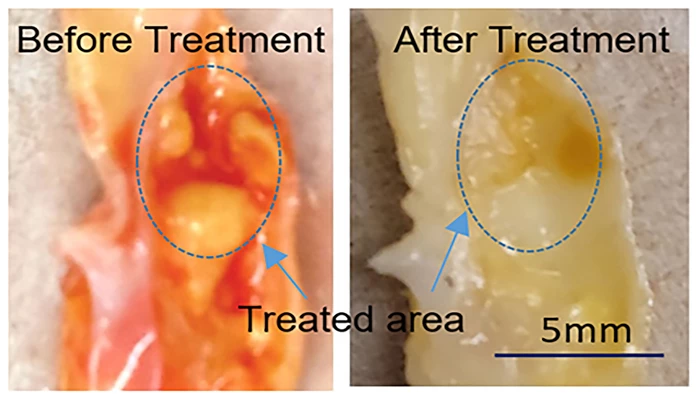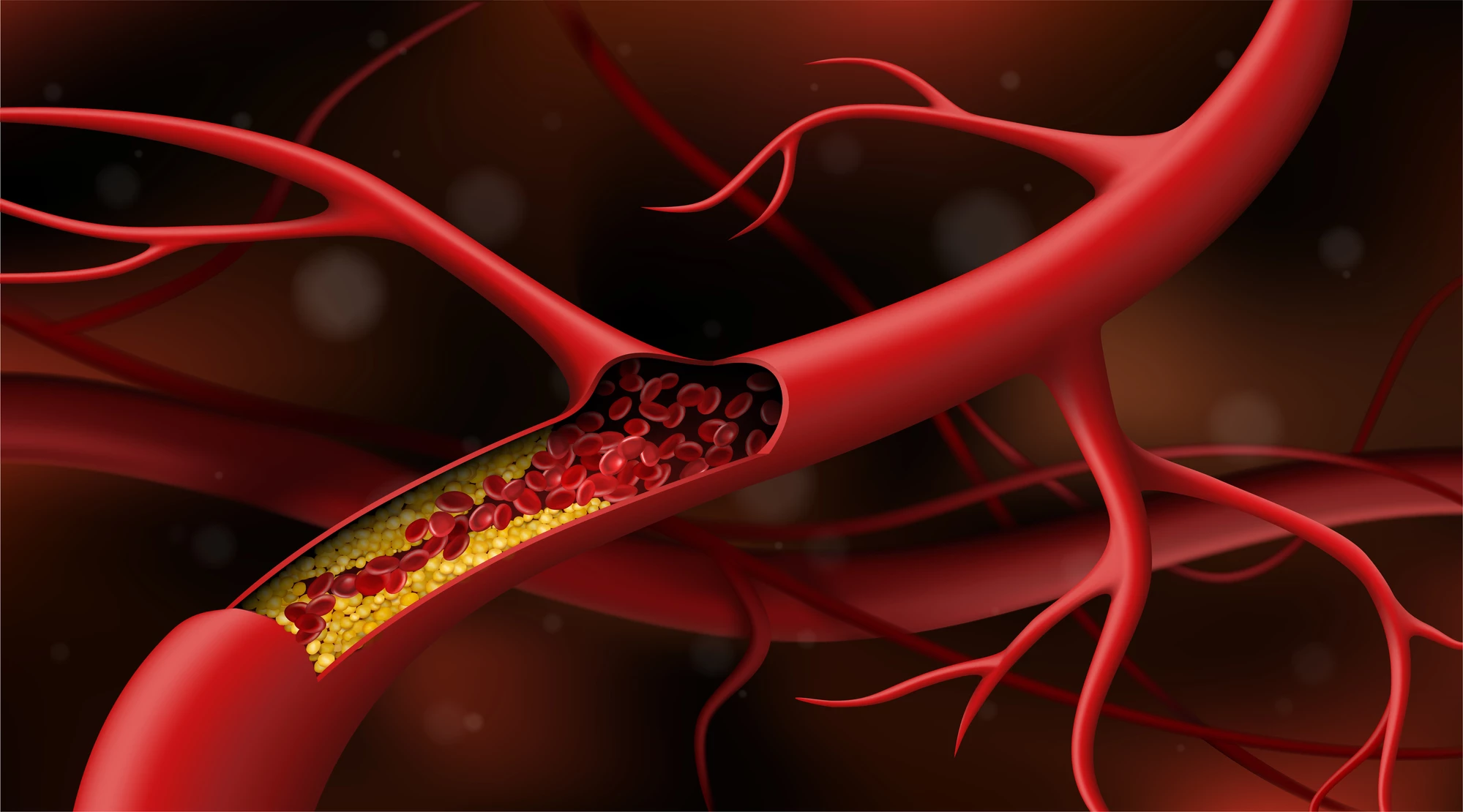Lasers are one of the tools physicians can lean on to tackle plaque buildup on arterial walls, but current approaches carry a risk of complications and can be limited in their effectiveness. By bringing ultrasound into the mix, scientists at the University of Kansas have demonstrated a new take on this treatment that relies on exploding microbubbles to destroy plaque with greater safety and efficiency, while hinting at some unique long-term advantages.
The novel ultrasound-assisted laser technique builds off what's known as laser angioplasty, an existing treatment designed to improve blood flow in patients suffering from plaque buildup that narrows the arteries. Where more conventional treatments such as stents and balloon angioplasty expand the artery and compress the plaque, laser angioplasty destroys it to eliminate the blockage.
The laser is inserted into the artery with a catheter, and the thermal energy it generates turns water in the artery into a vapor bubble that expands, collapses and breaks up the plaque. Because this technique calls for high-power lasers, it has the potential to perforate or dissect the artery, something the scientists are looking to avoid by using low-power lasers instead.
They were able to do so in pork belly samples and ex vivo samples of artery plaque with the help of ultrasound. The method uses a low-power nanosecond pulsed laser to generate microbubbles, and applying ultrasound to the artery then causes these microbubbles to expand, collapse and disrupt the plaque.

"In conventional laser angioplasty, a high laser power is required for the entire cavitation process, whereas in our technology, a lower laser power is only required for initiating the cavitation process," said team member Rohit Singh. "Overall, the combination of ultrasound and laser reduces the need for laser power and improves the efficiency of atherosclerotic plaque removal."
The mix of lasers and ultrasound has shown potential in other areas of medicine, with Singh and his colleagues pursuing similar therapies to tackle abnormal microvessels in the eye that cause blindness and blood clots in the veins. We've also seen ultrasound used to explode tiny bubbles in cancer research, providing a way of wiping out cancerous cells within a tumor.
Because it destroys rather than compresses the plaque, the scientists say the technique should have a lower risk of artery re-narrowing after treatment, as compared to balloon angioplasty and stenting. They are now in the process of planning in vivo experiments, noting that both laser and ultrasound techniques are already commonly used by clinicians, which should streamline their path to potential clinical use.
The research is being presented this week at the 182nd Meeting of the Acoustical Society of America in Denver.
Source: Acoustical Society of America via EurekAlert




